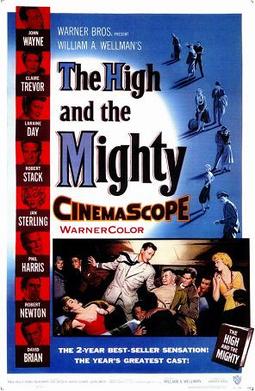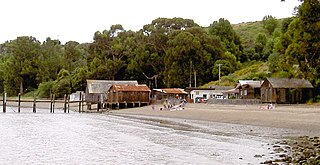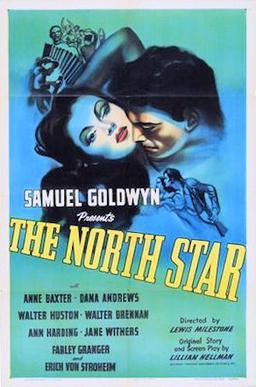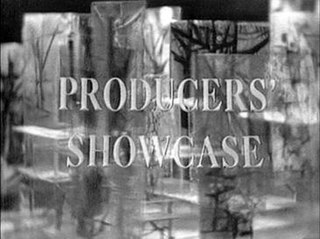
Robert Charles Durman Mitchum was an American actor. He is known for his antihero roles and film noir appearances. He received nominations for an Academy Award and a BAFTA Award. He received a star on the Hollywood Walk of Fame in 1984 and the Golden Globe Cecil B. DeMille Award in 1992. Mitchum is rated number 23 on the American Film Institute's list of the greatest male stars of classic American cinema.
The year 1955 in film involved some significant events.

Albert Sidney Fleischman was an American author of children's books, screenplays, novels for adults, and nonfiction books about stage magic. His works for children are known for their humor, imagery, zesty plotting, and exploration of the byways of American history. He won the Newbery Medal in 1987 for The Whipping Boy and the Boston Globe–Horn Book Award in 1979 for Humbug Mountain. For his career contribution as a children's writer he was U.S. nominee for the biennial, international Hans Christian Andersen Award in 1994. In 2003, the Society of Children's Book Writers and Illustrators inaugurated the Sid Fleischman Humor Award in his honor, and made him the first recipient. The Award annually recognizes a writer of humorous fiction for children or young adults. He told his own tale in The Abracadabra Kid: A Writer's Life (1996).

The High and the Mighty is a 1954 American aviation disaster film, directed by William A. Wellman, and written by Ernest K. Gann, who also wrote the 1953 novel on which his screenplay was based. Filmed in WarnerColor and CinemaScope, the film's cast was headlined by John Wayne, who was also the project's co-producer.

Lufeng, alternately romanized as Lukfung, is a county-level city in the southeast of Guangdong province, administered as a part of the prefecture-level city of Shanwei. It lies on the mainland on coast of the South China Sea east of Hong Kong.

William Augustus Wellman was an American film director, producer, screenwriter, actor and military pilot. He was known for his work in crime, adventure, and action genre films, often focusing on aviation themes, a particular passion. He also directed several well-regarded satirical comedies. His 1927 film, Wings, was the first film to win an Academy Award for Best Picture at the 1st Academy Awards ceremony.

China Camp State Park is a state park in Marin County, California, surrounding a historic Chinese American shrimp-fishing village and a salt marsh. The park is located in San Rafael, California, on the shore of San Pablo Bay. It is known for its hiking and mountain biking trails, scenic views, and open spaces. The 1,514-acre (613 ha) park was established in 1976. A 75-acre (30 ha) district, including the shrimping village and a prehistoric shell midden, were added to the National Register of Historic Places in 1979 for having state-level significance in archaeology, architecture, commerce, settlement, and social history. China Camp State Park, along with the Rush Ranch Open Space Preserve, is part of the San Francisco Bay National Estuarine Research Reserve.

John Arthur Doucette was an American character actor who performed in more than 280 film and television productions between 1941 and 1987. A man of stocky build who possessed a deep, rich voice, he proved equally adept at portraying characters in Shakespearean plays, Westerns, and modern crime dramas. He is perhaps best remembered, however, for his villainous roles as a movie and television "tough guy".

Shek Wing-cheung, better known by his stage name Shih Kien, Sek Kin, or Sek Gin or Shek Kin(Chinese: 石堅; pinyin: Shí Jiān; Jyutping: Sek6 Gin1), was a Hong Kong–based Chinese actor and martial artist. Shih is best known for playing antagonists and villains in several early Hong Kong wuxia and martial arts films that dated back to the black-and-white period, and is most familiar to Western audiences for his portrayal of the primary villain, Han, in the 1973 martial arts film Enter the Dragon, which starred Bruce Lee.

Ian Keith was an American actor.

Peter Paul Fix was an American film and television character actor who was best known for his work in Westerns. Fix appeared in more than 100 movies and dozens of television shows over a 56-year career between 1925 and 1981. Fix portrayed Marshal Micah Torrance, opposite Chuck Connors's character in The Rifleman from 1958 to 1963. He later appeared with Connors in the 1966 Western film Ride Beyond Vengeance.

The North Star is a 1943 pro-resistance war film starring Anne Baxter, Dana Andrews, Walter Huston, Walter Brennan and Erich von Stroheim It was produced by Samuel Goldwyn Productions and distributed by RKO Radio Pictures. It was directed by Lewis Milestone, written by Lillian Hellman and featured production design by William Cameron Menzies. The music was written by Aaron Copland, the lyrics by Ira Gershwin, and the cinematography by James Wong Howe. The film also marked the debut of Farley Granger.

Lai Chi Wo is a Hakka village near Sha Tau Kok, in the northeastern New Territories of Hong Kong. It is described as a "walled village" by some sources. Lai Chi Wo is located within Plover Cove Country Park and near Yan Chau Tong Marine Park.

Honghu is a county-level city in the municipal region of Jingzhou, in the central south of Hubei province. The city lies on the northwest (left) bank of the Yangtze River, across from Hunan Province and Xianning, Hubei. It is named after the adjacent Hong Lake, which since ancient times has periodically flooded.

The village of Santikhiri, formerly known as Mae Salong, is in the Thai highlands on Doi Mae Salong mountain of the Daen Lao Range, in Mae Fa Luang District, Chiang Rai Province, the northernmost province of Thailand. The area has an alpine-like landscape and climate, and is known for its hill tribe villages, tea plantations, and cherry blossoms.

Producers' Showcase is an American anthology television series that was telecast live during the 1950s in compatible color by NBC. With top talent, the 90-minute episodes, covering a wide variety of genres, aired under the title every fourth Monday at 8 pm ET for three seasons, beginning October 18, 1954. The final episode, the last of 37, was broadcast May 27, 1957.
Articles related to Taiwan include:

Shipai Village is the largest urban village in Guangzhou, China. It is situated in the middle of Tianhe District in Guangzhou, with dense multi-story dwelling houses building in and lands for collective use. The village is supported by 170 narrow alleys yet surrounded by tall buildings and busy commercial streets. There are many shopping and entertaining centers as well as several institutions of higher education such as Jinan University nearby.

Spencer Chan was an American character actor of Chinese descent. He had a long career in numerous films.
The Spirit of Sacramento, also known as the Grand Romance, formerly known as the Putah, the Mansion Belle, the Chicu San and unofficially known as the Old Spirit of Sacramento, is a snagboat famous for its appearance in the 1955 film Blood Alley starring John Wayne. After a devastating fire in 1996, the boat fell into disrepair and now sits beached on the banks of the Sacramento River.

















